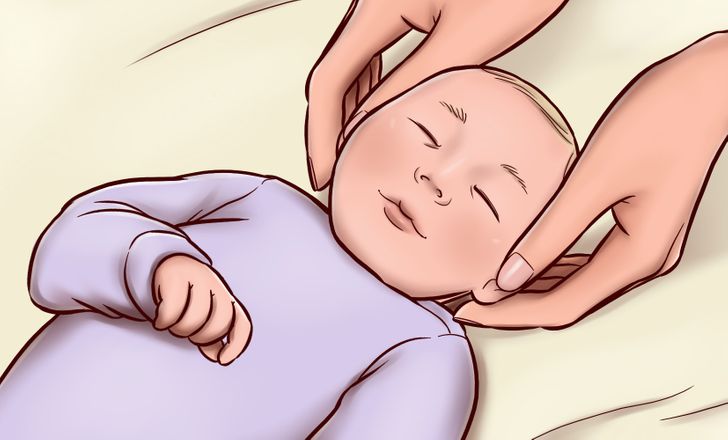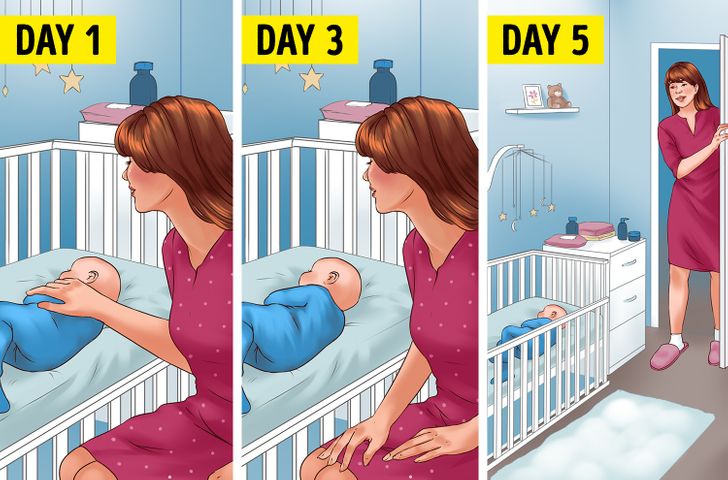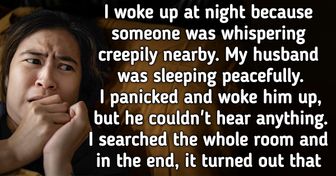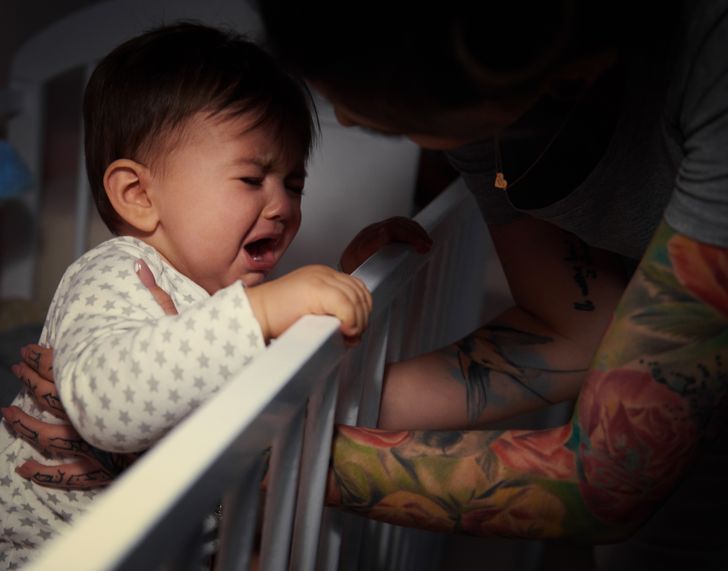Sleeptraining of any kind as in wanting your child to sleep on times and during times you design is a form of child abuse. How would you feel if someone is telling you to sleep whenever they want you to, regardless of your own needs?
How to Sleep Train Your Child If You Don’t Want Them to “Cry It Out”
The so-called Cry It Out method, or extinction sleep training, is a popular way to help children stick to a certain sleep routine. This approach implies leaving your kid crying as they fall asleep, alone or with interval checking. Even though parenting experts and doctors believe that this method is quite safe and effective, many parents feel uncomfortable leaving their kids crying in the crib. Luckily, there are other low-stress ways to help your child settle themselves into a peaceful sleep, with no tears involved.
Here at Bright Side, we’ve studied a couple of alternative sleep training approaches recommended by the experts, and here they are.
Bedtime fading method

This method implies gradually making your kid’s bedtime later. If you try to put your child down at 9 p.m., the child keeps crying for 45 minutes, and then you finally give up, try moving the bedtime back by 45 minutes. This technique can help you use your kid’s natural sleep drive and make falling asleep faster and easier.
When your child gradually starts falling asleep faster, you can adjust the bedtime to be earlier to reach the desired schedule. Experts suggest moving the bedtime to be 15 minutes earlier every 2 days. If you choose this method, it’s better to not let your child oversleep in the morning or take naps in the late afternoon, as they’ll feel less sleepy at bedtime.
Bedtime fading method combined with positive routines

According to experts, children tend to fall asleep easier when there’s a series of pleasant and predictable rituals that set the stage for sleeping. Just like in the method we discussed above, you need to find the time when your child falls asleep naturally and add a couple of soothing rituals that will start about 20 minutes before their bedtime and will gradually lead your child to sleep. You can try the things that are best for your child — like taking a bath, reading or listening to a story, and so on.
The camping out method

This is another low-stress sleep training method that consists of gradually leaving your child alone during their bedtime. You can start by putting your child to sleep when they’re drowsy but still awake. Start at the crib, and night by night gradually increase the distance between you and your child until you find that your kid falls asleep without your presence in the room.
Sleep training expert Craig Canapari, MD suggests that you follow this scheme of withdrawing yourself from your kids room: start with rubbing your kid’s back when they’re falling asleep, and then gradually move to staying by their bed, in the room, by the door, and finally, in the hall. Each new step should be taken after 1-3 nights.
Things you need to remember when sleep training your child
- Choose the method that fits your family. Experts suggest planning the start of sleep training when you and your partner don’t have many things going on in your life, as the first few nights might be a little difficult and tiresome. Make sure both you and your partner understand what you are going to do and how you are going to do things.
- Be consistent. Once you work out a plan, stick to it. Make sure that you follow the sleep training routine for at least several nights in the beginning. Remember that kids need time to get used to changes, just like you and your partner.
- Be ready for a relapse. Experts warn parents that kids can occasionally fall out of the bedtime routine, even when it seems that sleep training is going well. This can happen due to teething, health problems, or learning new skills. Be patient.
No matter what sleep training technique you choose, doctors warn parents that they should all be practiced on healthy children. So it’s better to consult your pediatrician before you start sleep training your child.
Did you sleep train your child? What methods did you use? Did they work?
Comments
Related Reads
17 People Got Into Situations That Divided Their Day Into Before and After

14 Stories With Better Twists Than Oscar-Winning Movies

My Sister’s Husband Made a Mess in My Bathroom, so I Humiliated Him in Front of Everyone

19 Design Ideas That Left Us With More Questions Than Answers

10 Times Celebs Proved Women Fashion Isn’t Only About Sample Sizes

13 Types of Guys You Can Meet on First Dates

«Why She Looks 40?» Kylie Jenner, 26 Gets Body Shamed by Trolls for Looking Older in Recent Paparazzi Pictures

10 Beauty Standards Women Don’t Care About Anymore

20+ Acts of Stupidity People Actually Got Away With (New Pics)

A Detail Spotted on Salma Hayek’s Breasts Sparks Big Controversy, as She Celebrates 57th Birthday

Zac Efron’s Appearance a Few Days Ago Leaves Fans Shocked and Worried

Miley Cyrus Causes a Stir by “Leaving Nothing to the Imagination” as She Wears an Extremely Revealing Dress



